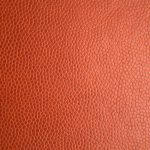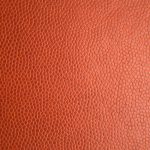When cross-stitching on 40-count silk gauze, you’ll appreciate its smooth, sheer surface that adds a subtle sheen to your work. Use fine needles (size 28 or 30) and silk threads to glide through the tightly woven fabric without distortion. Keep fabric tension gentle but secure in an adjustable hoop, stitch carefully from the center outward, and choose contrasting colors for clarity. Mastering these tips enhances your delicate design’s precision and elegance—explore more to perfect your technique.
Table of Contents
Key Takeaways
- Use fine tapestry needles (size 28 or 30) and silk or fine cotton threads to maintain fabric integrity and achieve a polished finish.
- Secure the 40-count silk gauze in a small, adjustable hoop to ensure consistent tension without distortion.
- Stitch slowly from the center outward, counting carefully to preserve precision on the tight, delicate weave.
- Select contrasting thread colors with limited palette to enhance design clarity and avoid muddiness on the sheer fabric.
- Finish by hand washing gently, pressing with low heat, and framing with acid-free materials to protect and preserve your work.
Understanding the Properties of 40-Count Silk Gauze
Although working with 40-count silk gauze can be challenging, you’ll appreciate its delicate texture and fine weave once you get used to it.
Working with 40-count silk gauze takes practice, but its delicate texture and fine weave are truly rewarding.
This fabric features 40 threads per inch, creating an incredibly smooth and refined surface, perfect for detailed cross-stitch designs. You’ll notice it’s much lighter and more transparent than typical Aida cloth, which demands careful handling to avoid distortion or snagging.
The silk fibers give it a subtle sheen, enhancing your stitches’ elegance. Because of its tight weave, your needle will pass through smaller holes, requiring patience and precision.
Understanding these qualities helps you adjust your stitching tension and technique, ensuring your finished piece looks crisp and professional.
Embrace the uniqueness of 40-count silk gauze to elevate your cross-stitch projects.
Essential Tools and Materials for Fine Cross-Stitching
When working with fine fabrics like 40-count silk gauze, choosing the right tools and materials makes all the difference in your stitching experience and final result.
You’ll want items that complement the delicate nature of the fabric and help you maintain precision without damage.
Here are three essentials to have on hand:
- Fine Tapestry Needles: Use size 28 or 30 needles to avoid creating large holes in the fabric.
- Silk or Fine Cotton Threads: These glide smoothly through the gauze, preventing snags and ensuring a polished finish.
- Adjustable Embroidery Hoop: A hoop that secures the fabric without stretching or distorting it’s vital for consistent tension.
With these tools, you’ll handle 40-count silk gauze confidently and produce stunning cross-stitch pieces.
Techniques for Precise Stitching on Delicate Fabric
Mastering three key techniques will help you achieve precise stitches on delicate silk gauze. First, always handle the fabric gently to prevent distortion; avoid pulling your needle too tightly.
Second, use a sharp, fine needle—size 28 or 30 works best—to pass smoothly through the tiny threads without snagging.
Third, secure your fabric in a small, tight hoop to maintain tension without stretching the silk gauze. Work slowly and count your stitches carefully to maintain accuracy.
Also, consider stitching from the center outward to keep your design balanced. These careful methods guarantee each stitch sits perfectly, preserving the fabric’s delicate nature while delivering a crisp, beautiful finish.
With practice, your precision will make your detailed designs truly stand out.
Managing Thread and Color Selection for Detailed Designs
Selecting the right threads and colors plays a crucial role in bringing your cross-stitch design on silk gauze to life. Since silk gauze is delicate and has a fine weave, you need to be mindful of thread weight and color intensity to guarantee your design pops without overwhelming the fabric.
Here’s what to focus on:
- Choose fine threads: Use stranded silk or cotton floss with fewer strands to maintain detail without bulk.
- Consider color contrast: Pick colors that stand out well against your silk gauze’s color to highlight intricate patterns.
- Plan your palette: Limit your color range to avoid muddiness and keep the design sharp and clear.
With these steps, you’ll manage threads and colors effectively for stunning, detailed cross-stitch projects.
Tips for Finishing and Preserving Your Silk Gauze Projects
Because silk gauze is so delicate, you’ll want to handle finishing and preserving your cross-stitch projects with extra care to maintain their beauty and longevity.
First, gently hand wash your finished piece in cool water with a mild detergent to remove oils and dirt. Avoid wringing; instead, press the water out between towels.
When ironing, use a low heat setting and place a clean cloth over the stitches to protect the fibers.
For framing, choose acid-free mats and UV-protective glass to prevent fading.
Store any unframed projects flat in a dry, dark place, wrapped in acid-free tissue paper.
Frequently Asked Questions
Can 40-Count Silk Gauze Be Used With Other Embroidery Styles?
You’ll find 40-count silk gauze a delicate canvas, perfect for various embroidery styles beyond cross-stitch. Just handle it gently, and you’ll weave intricate, shimmering threads into a masterpiece that dances with light.
How Do Environmental Factors Affect Silk Gauze Longevity?
You’ll find that humidity can weaken silk fibers, while sunlight causes fading. Keep your silk gauze dry and away from direct light to maintain its strength and color, preserving its longevity effectively.
What Are Common Mistakes to Avoid With Silk Gauze?
You should avoid using too much tension, which can distort the fabric. Don’t skip using a frame, and be careful with sharp needles—they can easily damage delicate fibers. Also, always handle your work with clean hands.
Are There Recommended Brands for Silk Gauze Fabric?
Sure, you could pick any fabric and hope for the best, but if you want quality, check out Zweigart or Silkweaver. They’re your best bets to avoid frustration and stitch with silky smoothness.
How to Repair Mistakes Made on 40-Count Silk Gauze?
If you spot a mistake, carefully unpick stitches with a fine needle or seam ripper. Work slowly to avoid damaging the delicate fabric. You can also gently re-iron the area to smooth any puckering afterward.
- What Is Gingham Fabric Made Of - June 15, 2025
- Is Gingham A Summer Fabric - June 15, 2025
- Is Gingham A Fabric Or Pattern - June 15, 2025







